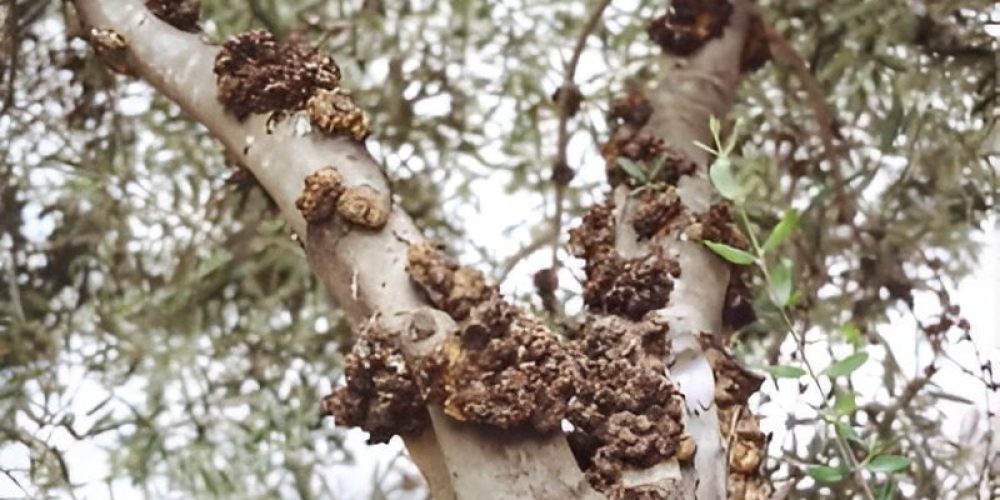Table of contents of the article
ToggleOlive knot disease is a bacterial disease that affects olive trees, causing knots and deformities on the branches. In this article on your site, WORLD OF PLANTS, we will review effective ways to combat this disease.
Symptoms of olive knot disease
- Scientific name : oliva knot disease
- Causative factor: Pseudomonas savastanoi.
- The characteristic symptom of infection is the appearance of balls or “knots” at infection sites. Balls are most commonly formed at leaf nodes (sites of bud development), due to infection of leaf scars with bacteria; However, they can also form at other points of entry for pathogens, such as pruning wounds or wounds caused by frost or hail damage.
- Although galls usually form on stems and branches, galls have also been observed on leaves and fruit
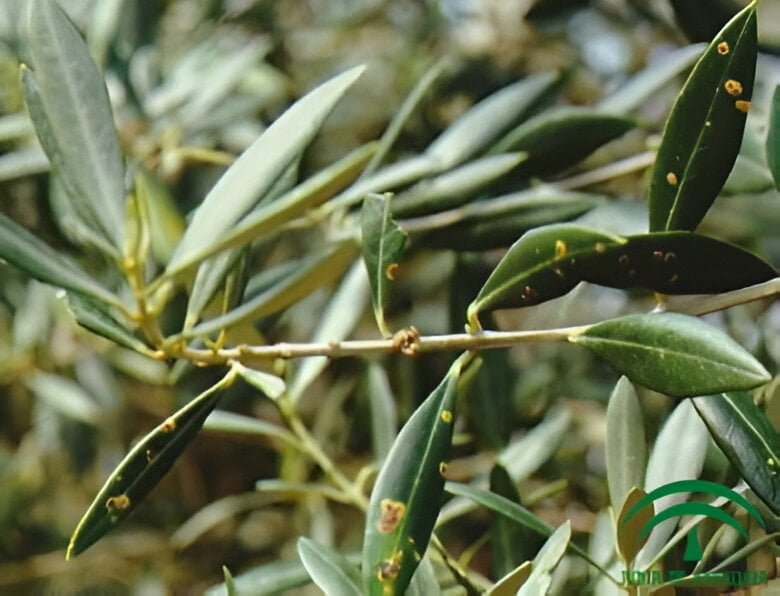
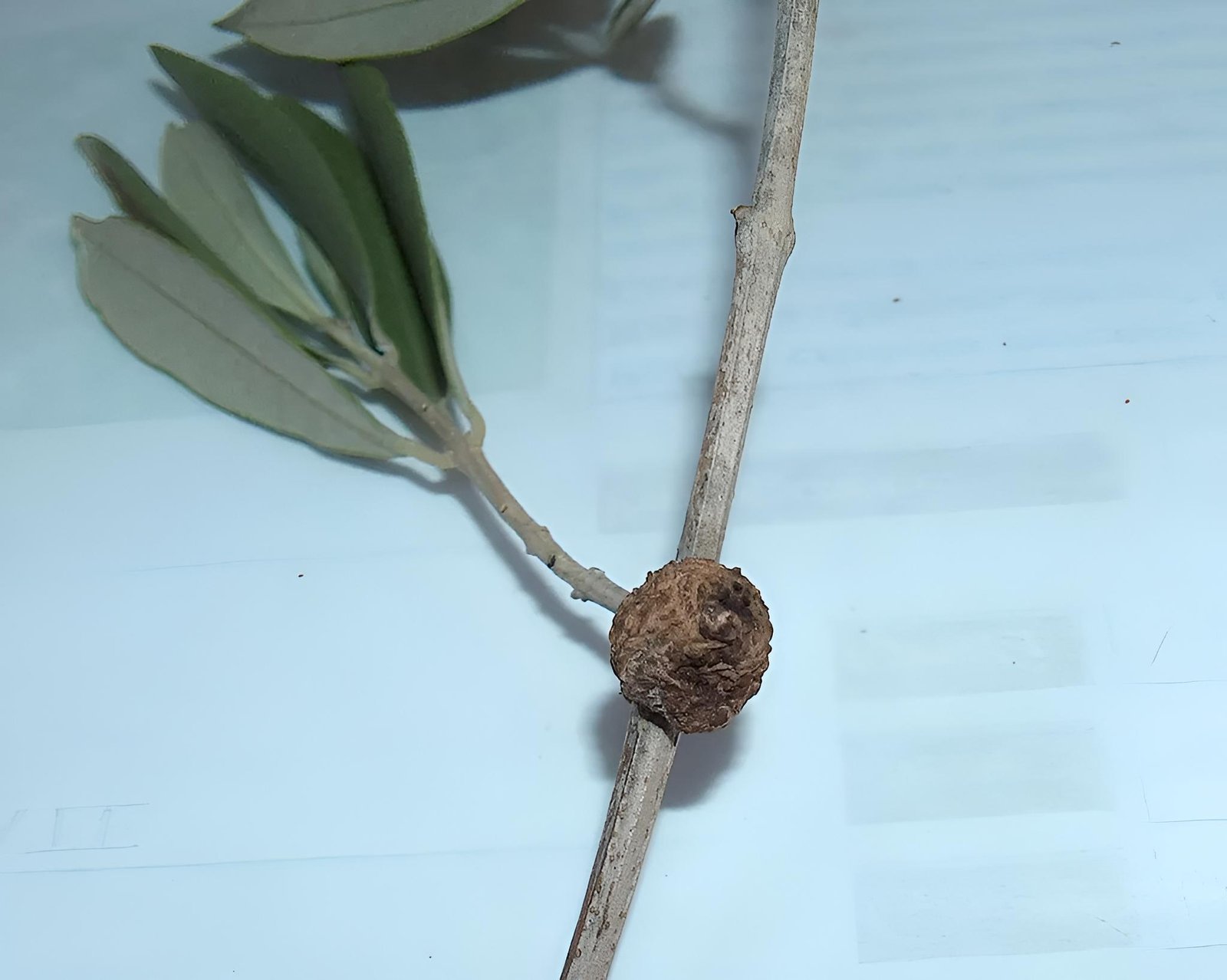
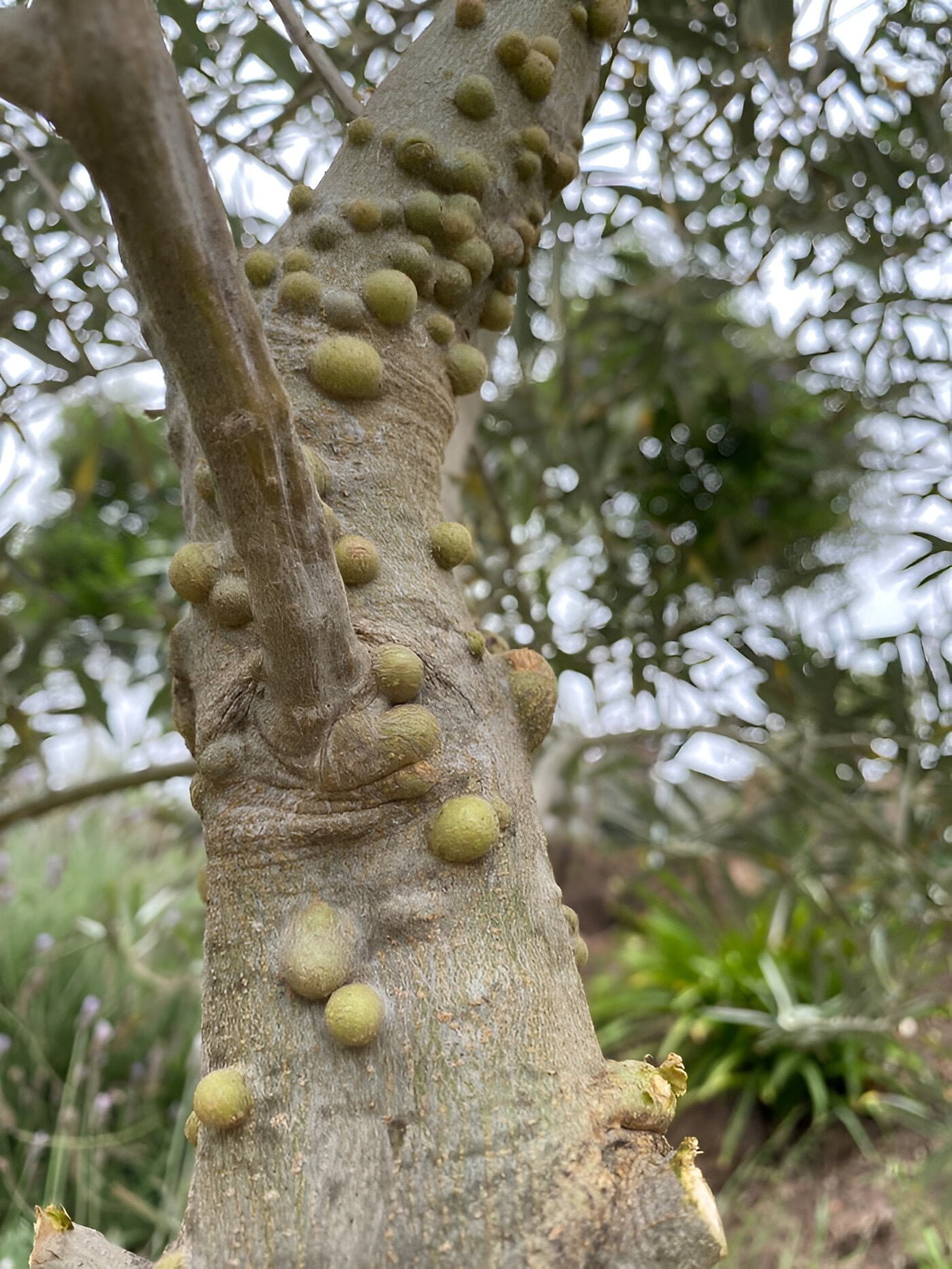
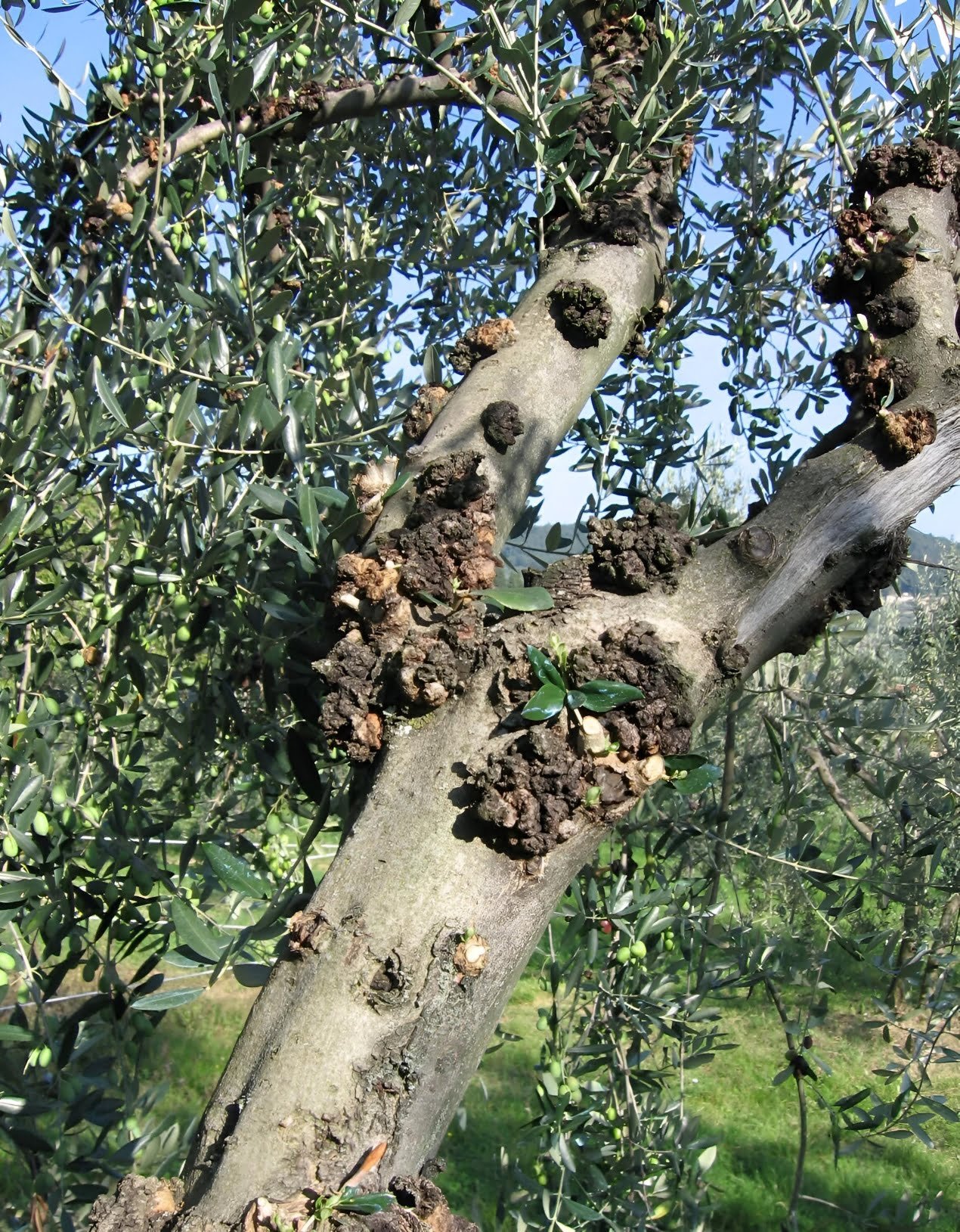
Causes of olive knot disease
The disease is caused by Pseudomonas savastanoi pv. Savastanoi (Psv), a bacterial pathogen that spreads short distances during winter and spring rain events.
Suitable conditions for the spread of olive knot disease
- The disease has become more common and serious over the past decade, partly due to increased cultivation of Manzanillo olives, a highly susceptible variety, and the introduction of high-density olive plantations for oil production, a system where mechanized cultural practices can promote disease development.
- The occurrence of olive knot disease is generally associated with rainfall and is more severe in areas with high rainfall or during years of heavy rainfall. It is easily spread by water at all times of the year.
Development cycle of olive knot disease:
Bacteria enter through wounds and scars on leaves or flowers after they fall, and are transmitted from infected trees to healthy trees by the olive fruit fly. The pathogen can be transmitted in rain carried by the wind or over greater distances using contaminated pruning tools or infected nursery stock.
Because galls only form as the tree grows, infections that begin during the winter will not show symptoms until spring
Losses from the spread of olive knot disease
- Death of infected branches.
- The death of infected shoots directly reduces yield
- The disease also affects fruit size and quality.
- Sensory tests of flavor have proven that even trees with only a few galls can produce off-flavored fruit.
- Additionally, the severe symptoms of olive knot detract from the aesthetics of olive trees used in commercial and private landscapes
- Olive knot can girdle trees and kill them if infestations occur on young tree trunks
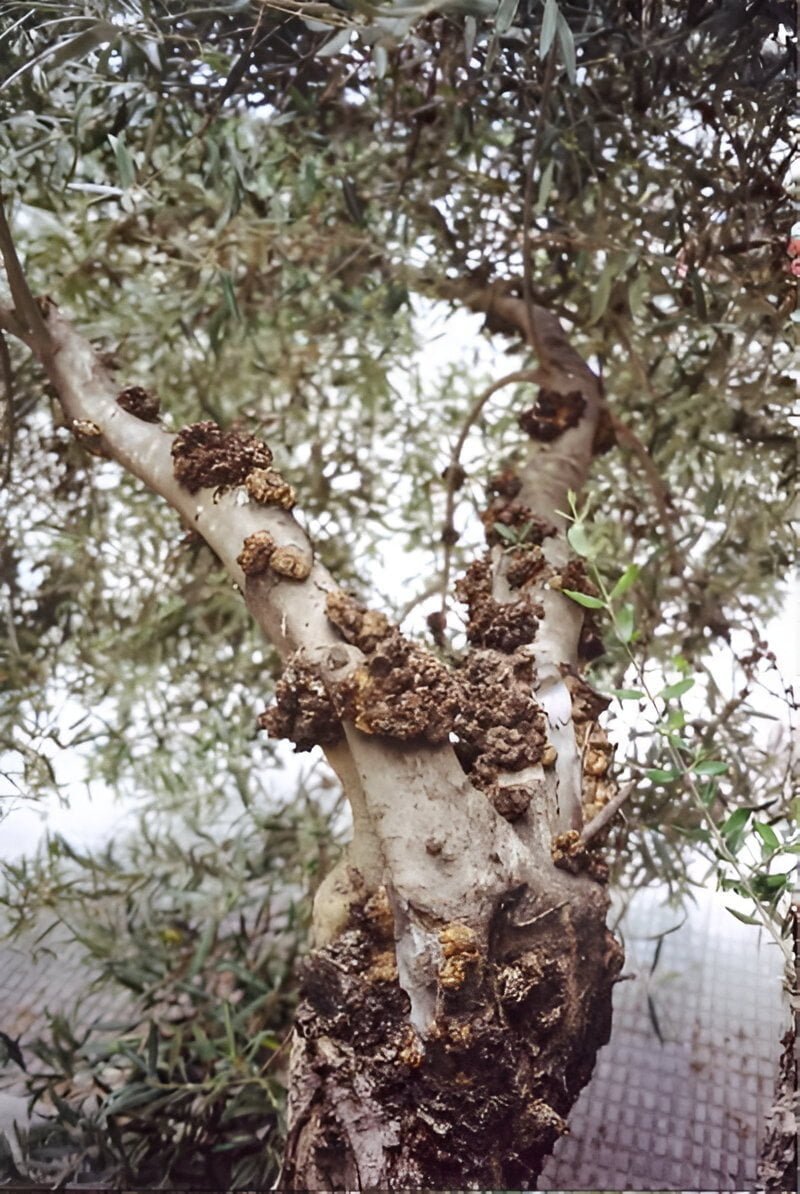
Combat strategy Olive knot disease
Preventive measures to prevent the occurrence of olive knot disease
- Prune carefully during the dry season (July to August) to remove galls on twigs and branches. Since bacteria may be carried on the pruning shears, be sure to sterilize them frequently if you prune at other times during the year.
- Mechanically harvested olive oil should be processed immediately after harvesting because harvesting can damage trees and open openings for bacteria. Harvesting is also done in the fall or winter when rain is likely. If possible, avoid harvesting when rain is expected
Chemical and organic control recommendations against olive knot disease
- One way to treat olive knot is to apply copper-containing pesticides to the affected part(s). Do this before a scheduled rain or injury event.
- Phenolic compounds extracted from wastewater and rich in hydroxytyrosol can be excellent alternatives to copper compounds in controlling olive knot disease.
- Branch studies in which leaves were removed from attached branches, treatments applied and then inoculated with Pseudomonas savastanoi showed a reduction in disease.
- In experiments against Pseudomonas savastanoi, streptomycin sulfate, a mixture of streptocycline and sodium arsenite, or bactcin (an emulsion containing 2,4-xylenol and m-cresol) were applied to the nodules and their sites after their removal. Best results were obtained with undiluted bacicin, and no bacterial colonies were found after 8 months.
In conclusion, we would like to note that we, at the world of plants website, offer you all the necessary services in the world of plants, we provide all farmers and those interested in plants with three main services::-
- Artificial intelligence consulting service to help you identify diseases that affect plants and how to deal with them.
- Blog about plants, plant diseases and care of various crops ... You are currently browsing one of her articles right now.
- An application that provides agricultural consultations to clients, as well as a service for imaging diseases and knowing their treatment for free – Click to download the Android version from Google Play Store، Click to download the IOS version from the Apple App Store.
References:
- Hewitt, W. B. 1938. Leaf-scar infection in relation to the olive-knot disease. Hilgardia 12:41–65.
- Penyalver, R., A. García, A. Ferrer, E. Bertolini, J.M. Quesada, C.I. Salcedo, J. Piquer, J. Pérez-Panadés, E.A. Carbonell, C. del Río, J.M. Caballero, and M.M. López. 2006. Factors affecting Pseudomonas savastanoi pv.savastanoi plant inoculations and their use for evaluation of olive cultivar susceptibility. Phytopathology 96:313–319.
- L. Ferguson, Plant Sciences, UC Davis
- PM Vossen (emeritus), UC Cooperative Extension Sonoma and Marin counties
- Journal of Plant Pathology 93(3): 561-568
- Epidemiology and Control of Plant Diseases Caused by Phytopathogenic Bacteria: The Case of Olive Knot Disease – researchgate
- Olive Knot – UNIVERSITY OF CALIFORNIA




